
If you have ever been among the seven million or so annual visitors to the city of York in England, you may intuit the challenges that face those tasked with managing its traffic.
Imposing castle walls that date back to Roman times enclose the city centre’s densely-clustered historic lanes and alleys, which comprise a mosaic of one-way streets. Several bridges span the city’s two rivers, the Foss and the Ouse.
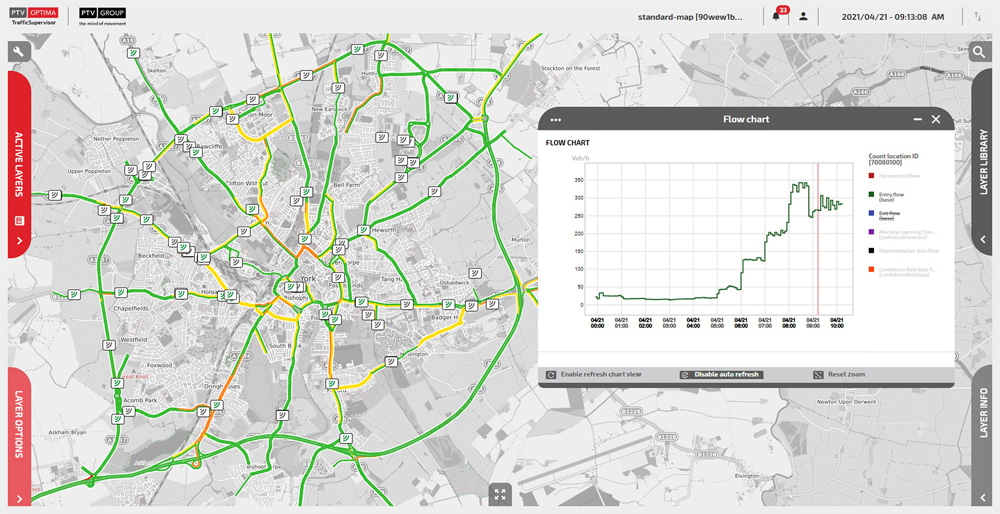
It’s a crowded network in which congestion and air-quality management are, unsurprisingly, imperatives but in which the scope for new infrastructure is also, understandably, limited. “They do a really good job with what they have and they have a good transport network,” says PTV UK technical director Michael Oliver. “But they have to add capacity in other ways.”
As part of a wider plan to improve mobility, the city’s traffic management authority has turned to software modelling and simulation tools to optimise the network capacity by helping predict flows and congestion events in real time and to enable them to react to and even anticipate bottlenecks and other problems with greater agility.
It does this by enabling traffic controllers to model alternative scenarios for the next hour, day or weeks into the future, allowing planners to see how various changes would affect congestion.
Step by Step
The modelling component is part of the city’s Smarter Travel Evolution Programme (Step), won by a consortium led by City of York Council and Wood Group in 2019, that aims to use data and technology to improve accessibility. Data from the network along with commercial data sources including TomTom, as well as sources from Highways England, is the fuel for the Optima data platform.
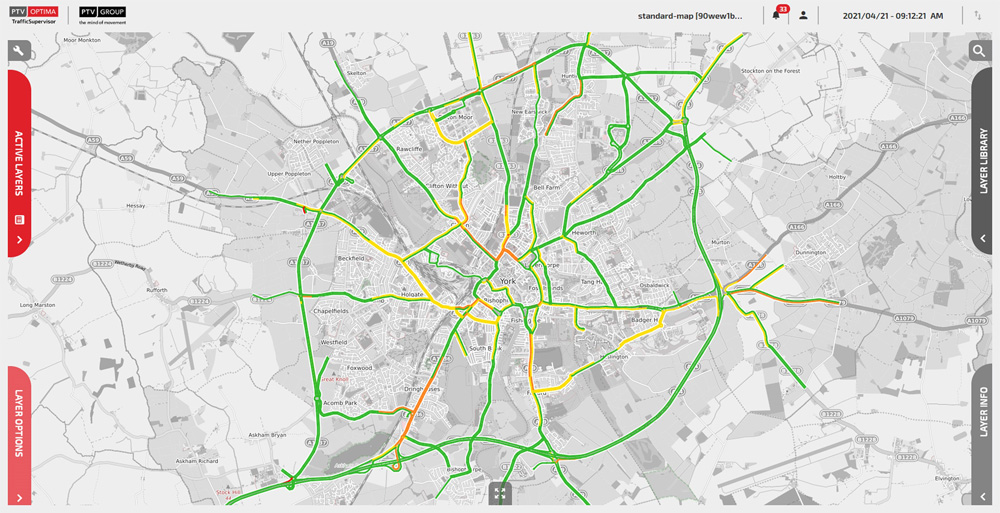
This is where consortium member PTV Group comes in - to build and develop the real-time transport model with its Optima software. The model pulls that live data together and uses transport modelling techniques to provide a live picture of traffic conditions in the city, as well as to enhance forecasting capabilities. “The aim is to update their tools to support medium- to long-term planning as well as help real-time decision making and also increase visibility as to what is happening on the network,” explains Oliver.
The system was signed off in May 2021, is operational and is already demonstrating positive results. “The control room has been experiencing the real-time transport model and in particular the current situation across the city,” says Oliver.
Before the system was installed, traffic management across the city’s network was largely manual. “Visibility was fairly muted because they had only had access to CCTV and social media feeds,” he says. “They used their knowledge and experience based on what normally happens to try to react and it was quite time-consuming.”
With the real-time model in place traffic managers are able to change traffic signal plans to help ease the congestion in specific areas. “They have a clearer picture of what is happening on the screen - they can see the whole network and prioritise their actions in real time, which allows them to be more proactive,” adds Oliver.
The system affords traffic planners great scope to dynamically adjust the network as conditions on the ground change. “They know for the last five minutes that ‘this was the state of the traffic flow, these were the signal timings that were running’ and so on. We simulate new traffic conditions across the whole network using that new information.”
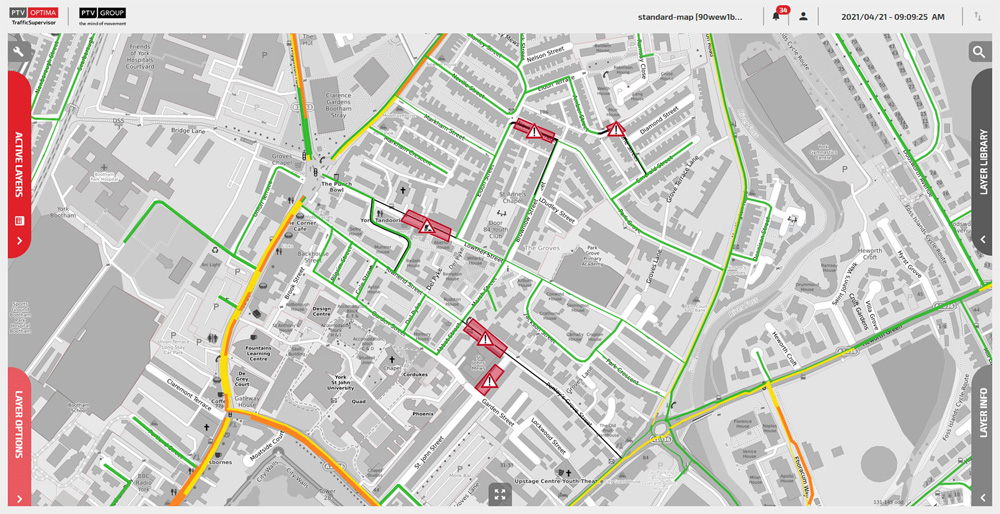
The client say it has been useful for them. “In an evening peak where signal plans for signals across the city are timed in a sequence, they can bring forward those plans if a peak is happening earlier than normal,” Oliver adds. “They can see that happening on the map and set up thresholds [based on] the norm in a particular corridor for this time of day and if something is happening they can act earlier.”
Future proofing
Further improvements are in train. The scope of the system to help with medium- to long-term planning and management will become apparent as it gathers more data, he says: “These are early days and they are still learning. As the network monitoring officers get to know the system more and as we train them, we are hoping that the system will be more involved with planning and strategies around different scenarios.”
This may take longer than originally anticipated owing to the unusual traffic situation caused by the impact of the pandemic and the restrictions imposed in response to it. “It’s difficult at the moment,” says Oliver. “Thanks to Covid, everything is all over the place. You need a model to base forecasts on but traffic conditions are nothing like they have ever been in living memory so we have had to be flexible.”
The system is, however, performing to the criteria outlined at the project’s inception, including simulation speeds and its ability to predict traffic flows. “It is working well so far,” says Oliver.
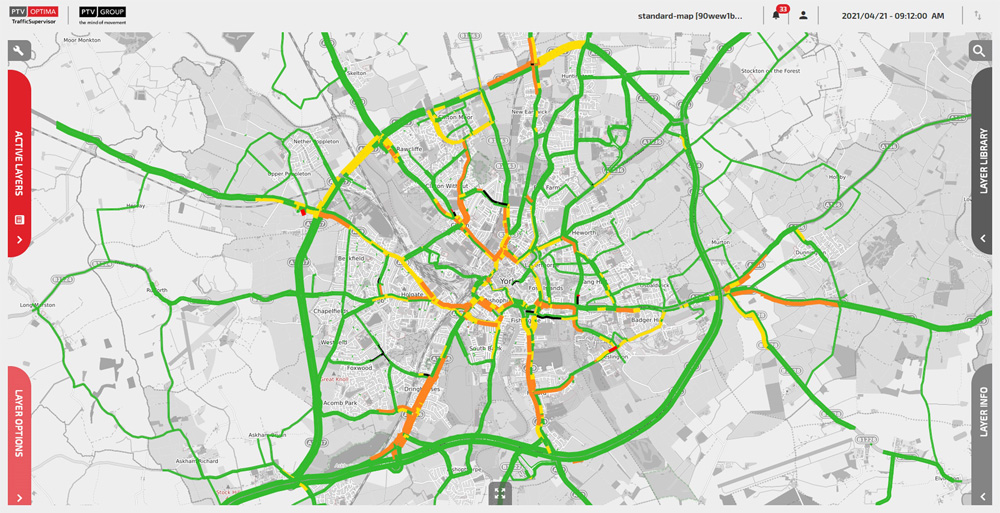
“In the control room they can test if something were to change, and if they were to respond in a certain way then this is what the model says will happen.”
One of the more complex aspects of implementing the project was integrating the traffic controllers, since tight integration between the traffic signals and Optima is pivotal in realising the potential of such software, says Oliver. “You need to make sure the data is there to feed the system. York upgraded its infrastructure as part of the wider Step project which means they can make full use of the system.”
As part of Step, the city has upgraded its traffic counting infrastructure to be able to count-traffic in different lanes and provide minute-by-minute feeds to the model. The model is currently accepting live feeds for 47 traffic cameras, 61 traffic counters, both cameras and inductive loops.
Further upgrades have been made to the traffic signal controllers, including 150 that are represented in model. “A lot of work has gone into integrating the hardware so they can communicate directly with the controllers,” says Oliver. “Now they can view most of the current signal plans and using the traffic forecasts from the live model to inform changes to signals via their traffic management system with a click, giving them more flexibility to respond to congestion.”
“You need good data coverage coming from the network. Traffic signals are complex, there are many different types and you need to ensure smooth communication between systems. We overcame that through early communication and early engagement to set up a clear traffic data protocol.”
Connected vehicles
Other uses and new capabilities are also envisaged for the system. “York are really keen on integrating Optima with other pilot projects and systems. So far in this implementation we have not incorporated buses but that is an area that York is open to exploring,” says Oliver.
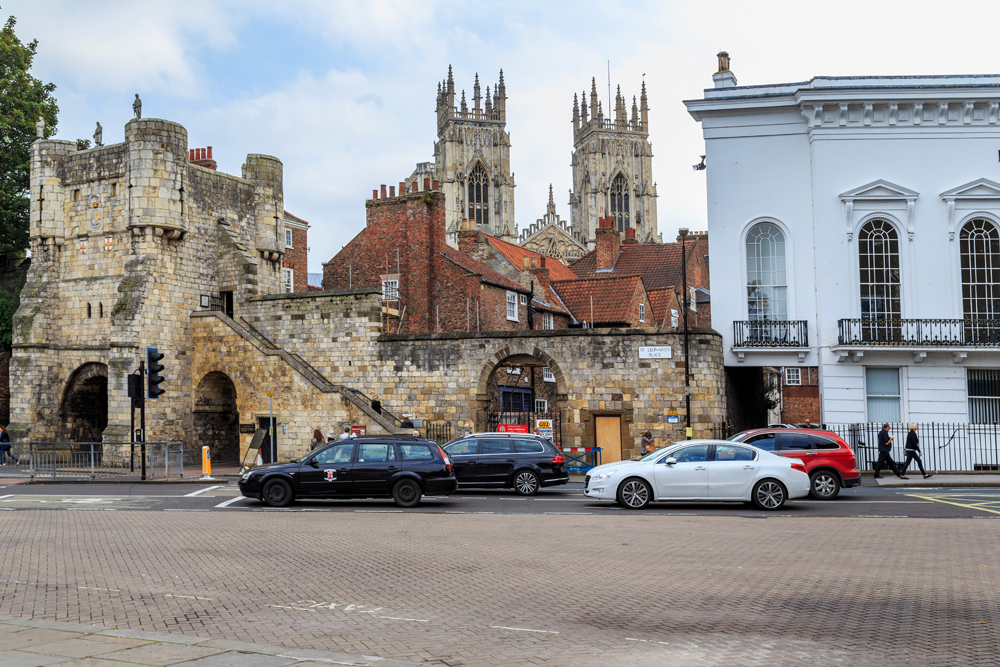
“We are hoping to put live bus location data on top of the model as well. If a bus is late running, they can look at prioritising the network for buses if that’s the objective and they can do estimated time of arrival as well.”
There is also greater scope for streamlining and easing the decision-making process for the network operators. “The client is excited about the potential to use the alerts generated within Optima as part of an automated process. For example, once Optima sees that a particular threshold has dropped, it will trigger an automated decision [prompt] showing what is happening. The traffic operators could then press a button within their system and trigger a response.”In time the Optima system may also play a part in a wider programme involving connected vehicles. “It may well be that as they look to new modes, we can collaborate together,” says Oliver.

The key to making a success of implementations of systems like Optima is to be clear on the key aims, says Oliver. “You need to assess your needs and who really benefits. In York it was the control room. The system gives them great visibility across the network, different data assets and different readings to build a grand truth across the network, along with automated alerts to deal with different scenarios.”
It is too early to assess hard metrics of success in terms of congestion and air quality for Optima, given the exceptional traffic conditions of the initial implementation but Oliver is confident these benefits will be seen in time.





